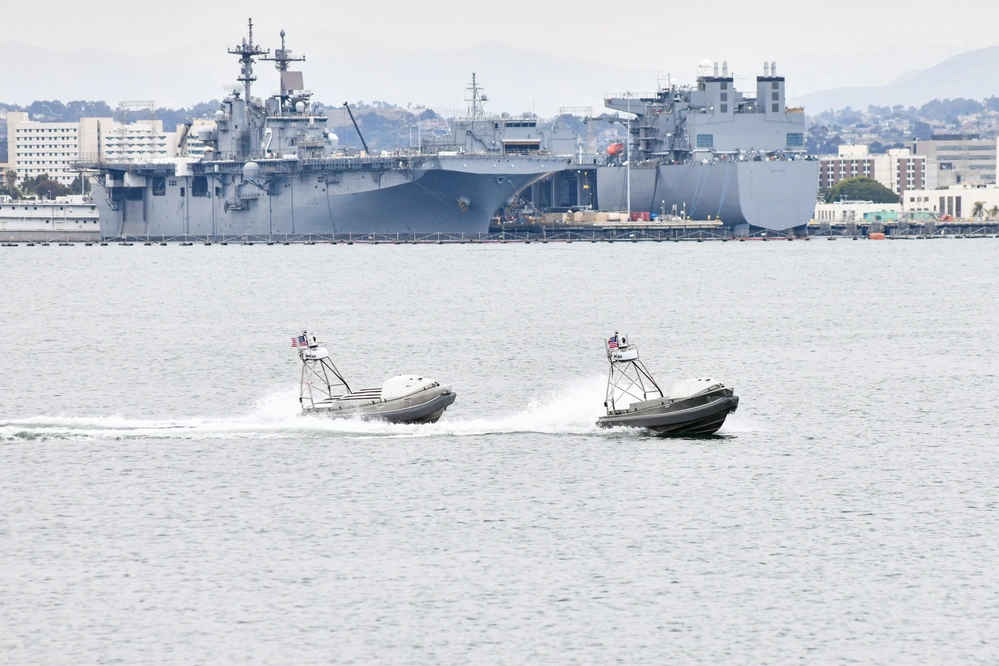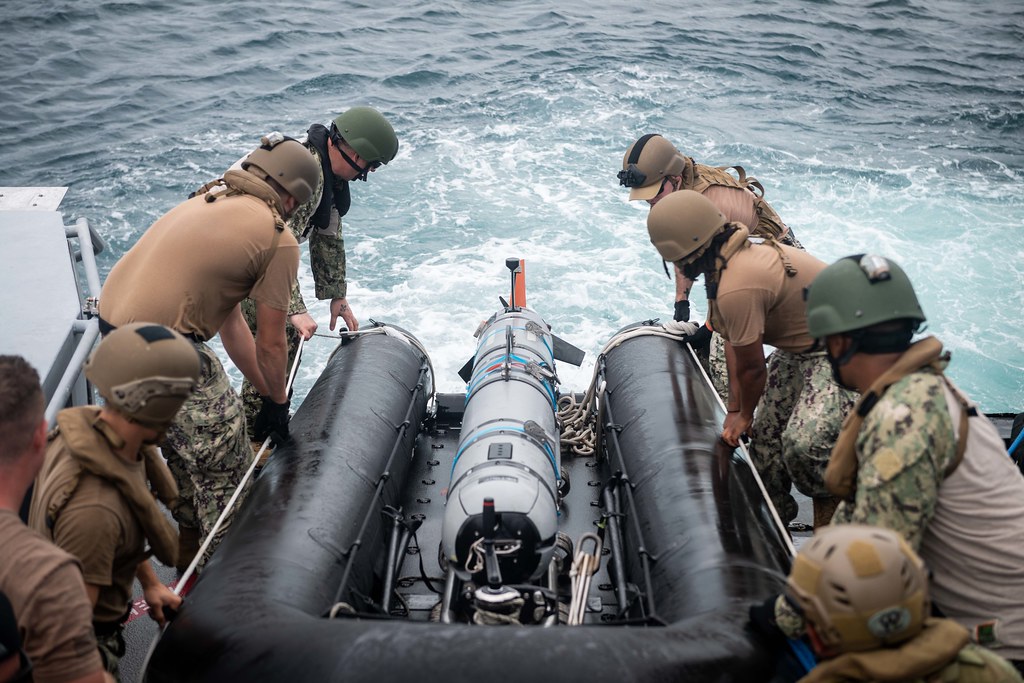
The US Navy marked a significant milestone in military innovation and autonomous warfare last week with the official commissioning of Unmanned Surface Vessel Squadron Three (USVRON Three) at Naval Base San Diego.

The new squadron, led by Capt. Derek Rader, represents a leap into the future of naval operations, embracing the power of small unmanned vessels, also known as Global Autonomous Reconnaissance Craft (GARC), to enhance the Navy’s strategic capabilities.

The formation of USVRON Three is part of the Navy’s broader vision to create a hybrid fleet where manned and unmanned systems operate in tandem.

Vice Adm. Brendan McLane, head of Naval Surface Forces, emphasized the importance of this move by stating, “The Navy is placing unmanned systems in the hands of 400 of our most talented warfighters to help integrate, scale, experiment, and employ these systems.”

McLane’s remarks reflect the Navy’s commitment to harnessing technological advancements and leading the charge in robotic warfare.

With the recent establishment of a “robotics warfare specialist” general rating, the Navy is preparing a new class of sailors to be the frontline operators and maintainers of these innovative sea drones.

According to a Navy release, these specialists will be equipped to handle the sophisticated systems on board the GARCs, dealing with aspects like artificial intelligence, machine learning, and autonomous navigation.

The fleet of small uncrewed surface vessels under the command of USVRON Three is designed to perform a variety of tasks, ranging from sensing to kinetic missions.

The 16-foot GARCs, boasting a displacement of 3,600 pounds, a top speed of 35 knots, and a range of over 460 miles, represent a formidable presence in maritime warfare.

Furthermore, the squadron plays a critical role in the Pentagon’s ambitious Replicator initiative, which aims to field thousands of “attritable autonomous” systems by August 2025.

The initiative, already backed with significant funding, is set to revolutionize the way the US military approaches combat scenarios.

The Navy’s approach isn’t just about deploying these cutting-edge machines; it’s also about developing the tactics, techniques, procedures (TTPs), and training to use them effectively.

As Commodore Shea Thompson, commander of Surface Development Group 1, put it, “There are currently no boundaries, and we have an incredible opportunity to determine what right looks like within our sphere of influence.”

As this new squadron integrates drone systems into the fleet, it also looks ahead to work with larger combat forces, potentially with carrier strike groups, surface action groups, or independently.

USVRON Three, while reporting to Surface Development Group One, promises to forge the path to operational excellence with small unmanned surface vessels.
Relevant articles:
– Meet the Navy’s newest sea drone squadron, Navy Times
– Navy stands up new robo-ship squadron as Pentagon pursues Replicator systems, DefenseScoop
– US Navy Forms Second Unmanned Surface Vessel Squadron, The Defense Post
– The Navy’s latest sea base is drone-ready, Defense One

